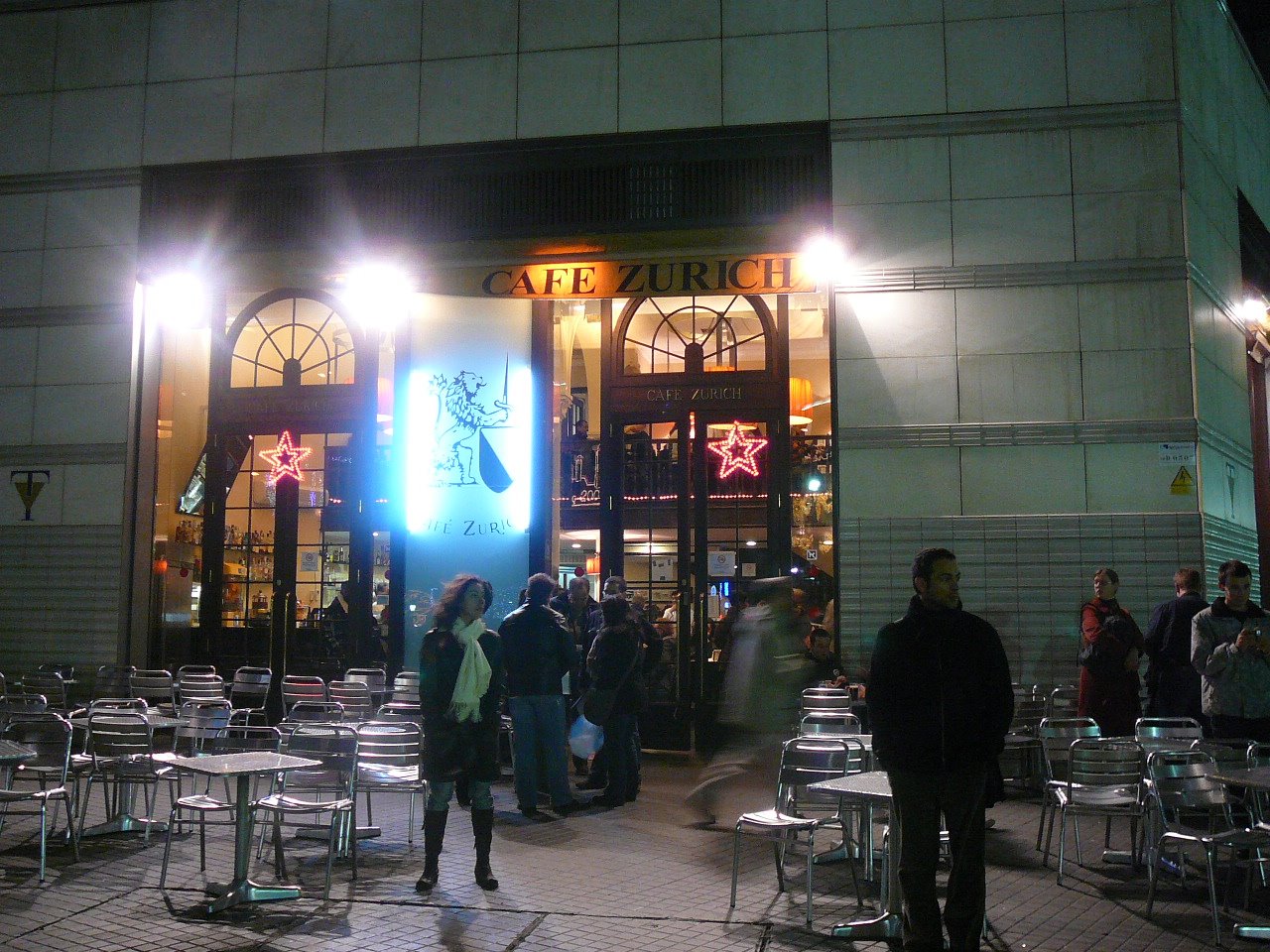Barcelona: Sagrada Familia, Part 2
We’re back home now, but there’s still lots more to discuss about Sagrada Familia. I left off the last post talking about the Passion facade, which was to be sculpted by Josep Subirachs. He has been quoted as saying that he departed from Gaudi’s style out of his deep respect for Gaudi’s work. He wanted his work to be compelling as well, but he didn’t think it was respectful to copy his style. The Passion facade, like the Nativity facade, tells a story through carvings. I’ll summarize a few with pictures in this post:
Here’s a sculpture of Judas kissing Jesus. You’ll notice to the left by their feet, there’s a square with numbers carved into it. Subirachs put in this “magic square” to pay homage to Jesus. There are 310 ways to add the numbers in the square up to 33, the age of Jesus at his death.
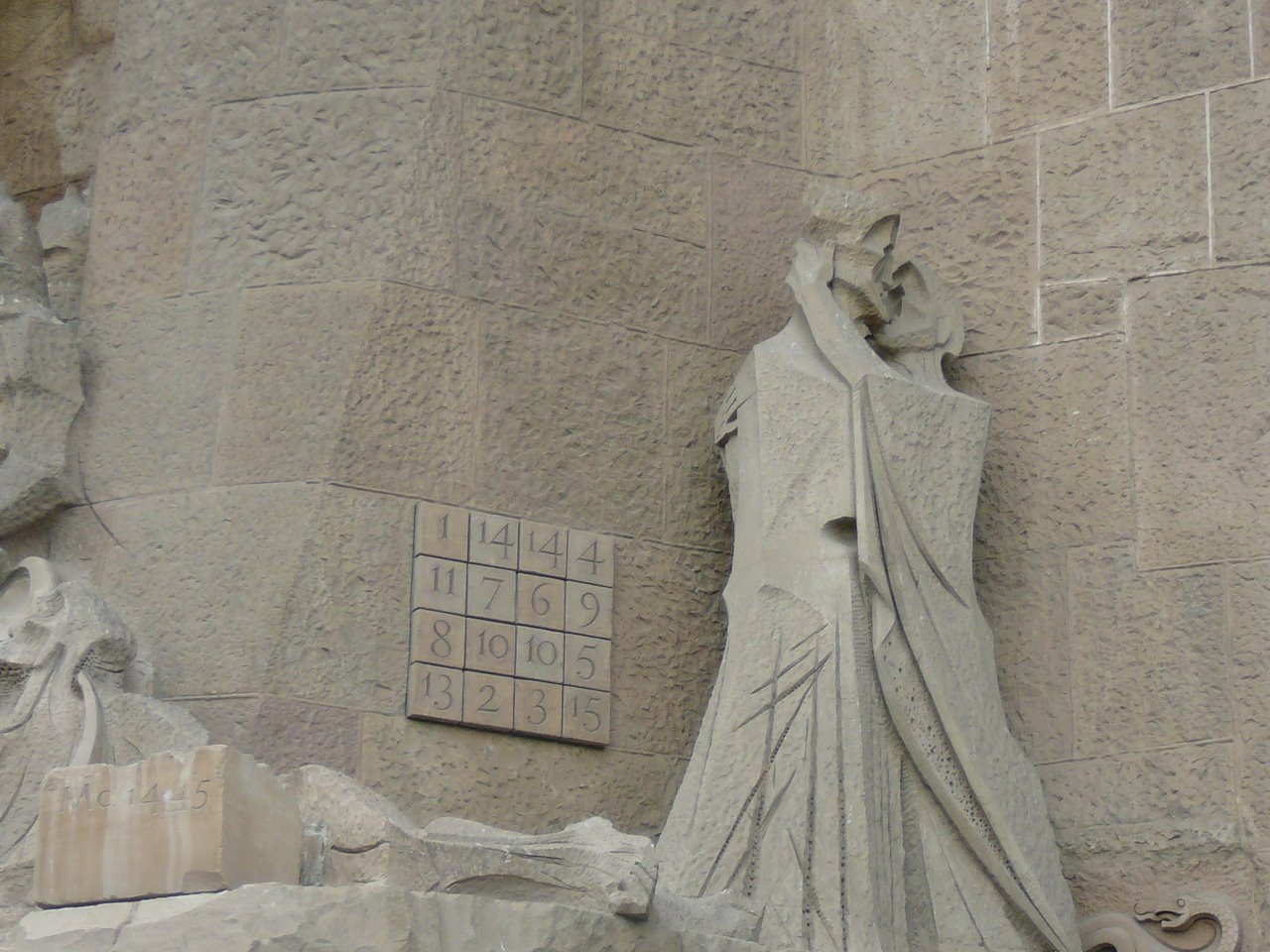
Another image, this one of the soldiers rolling dice for Jesus’ personal belongings:
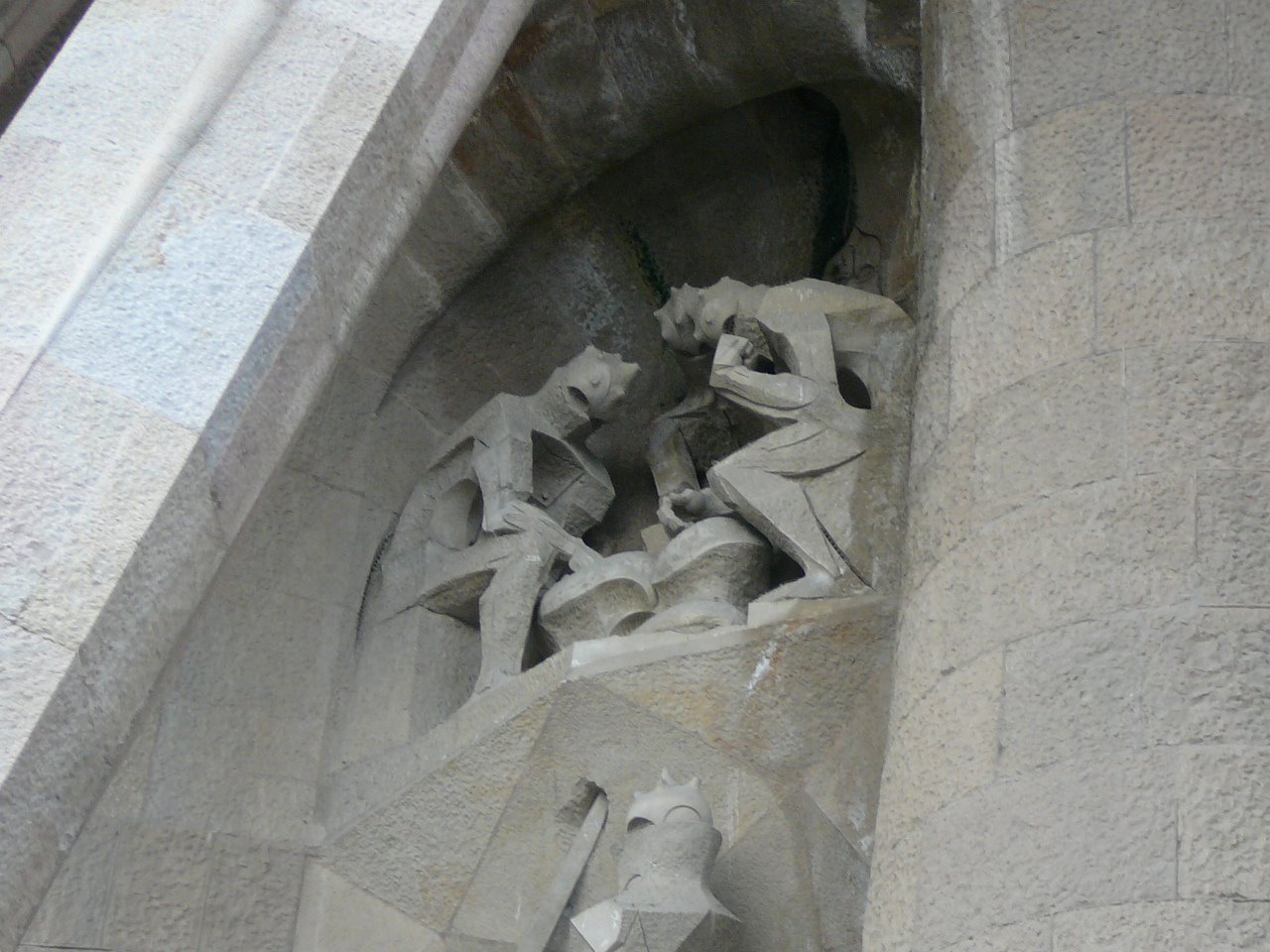
This carving of Jesus on his way to his crucifixion is significant in that Subirachs pays homage to Gaudi here by carving his likeness on the figure to the far left of the picture:
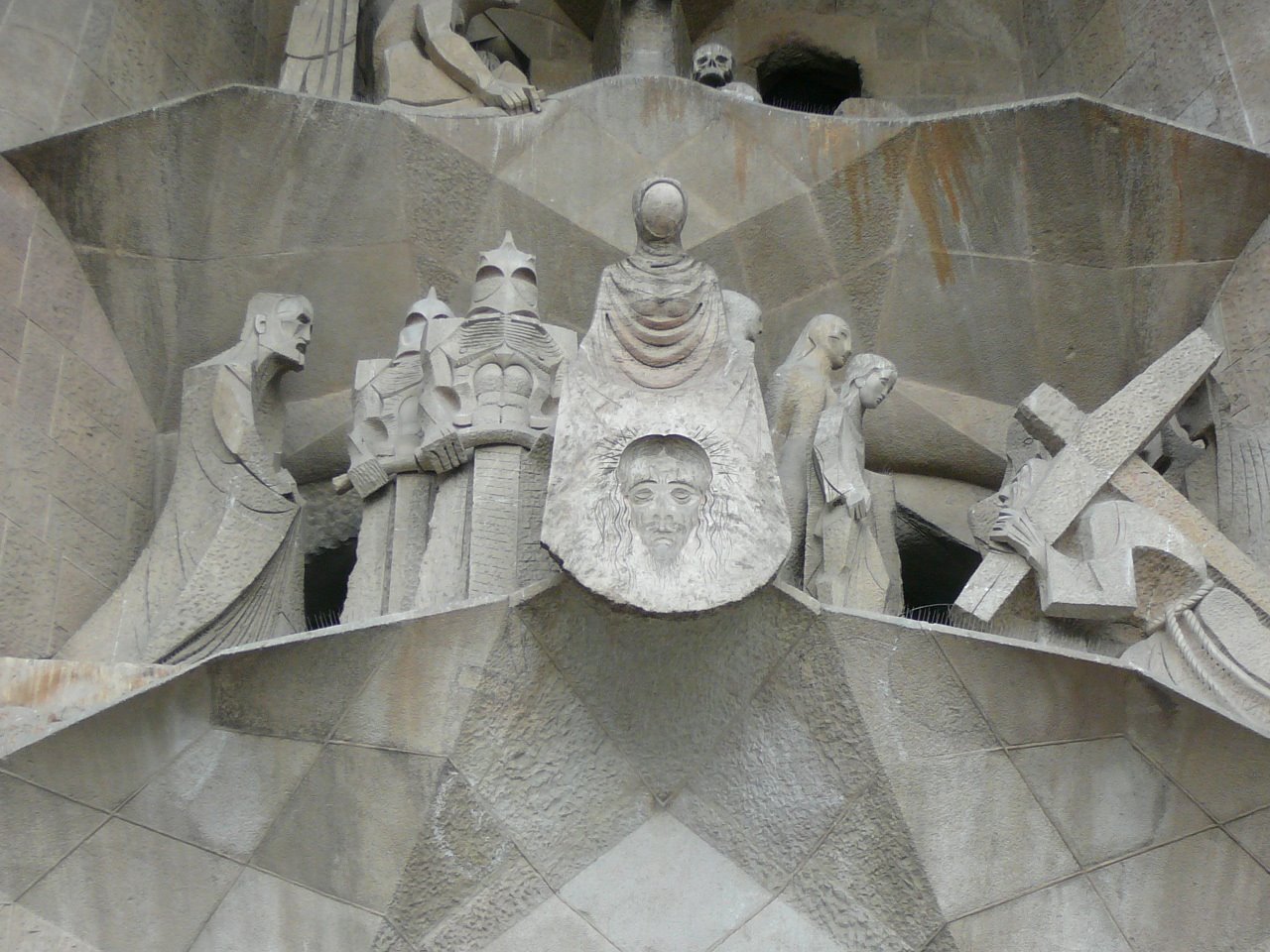
A couple of pictures of Jesus tied to a column being whipped:
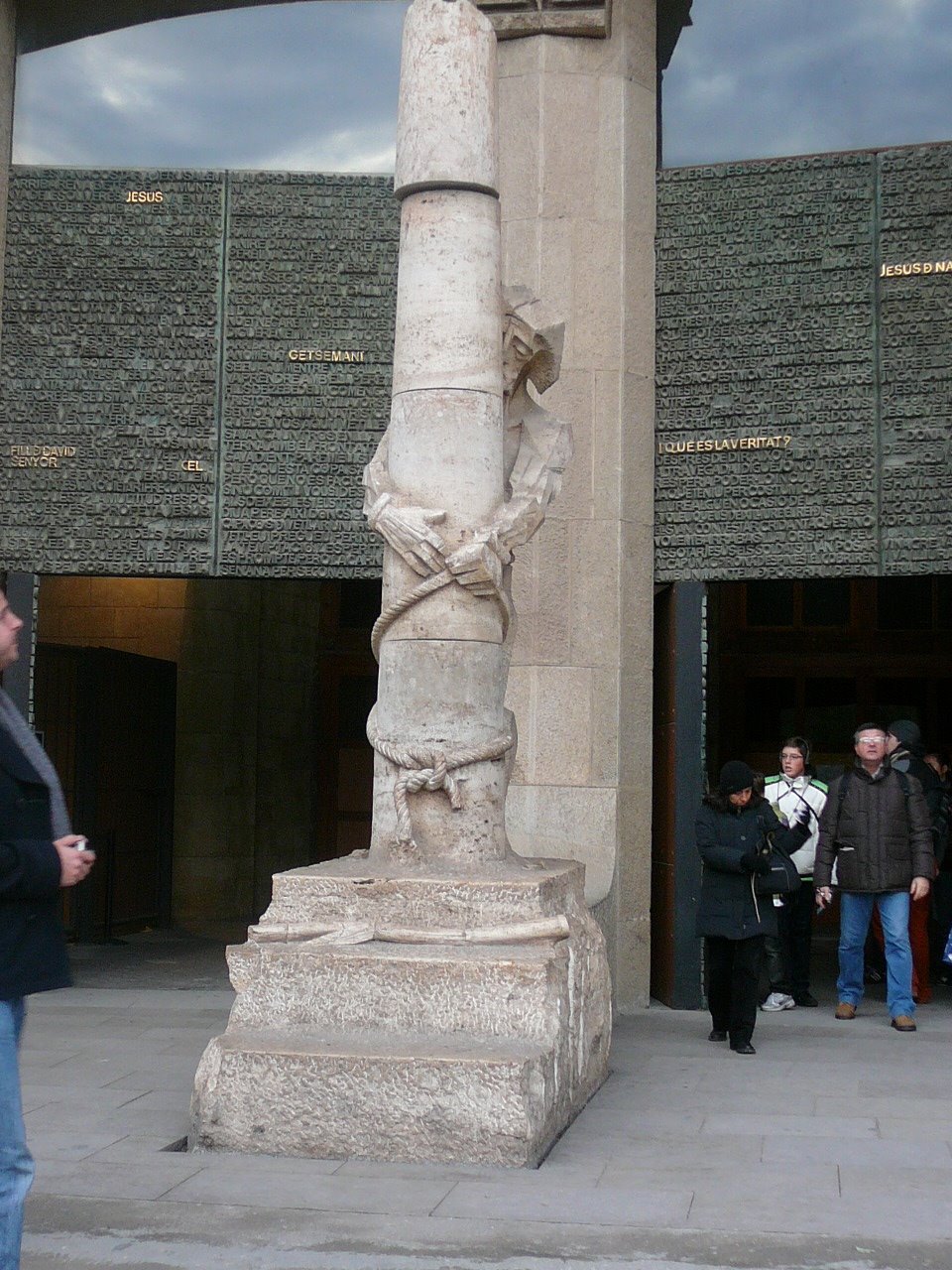
Subirachs carved in a channel of tears to the side of Jesus’ face in this sculpture:
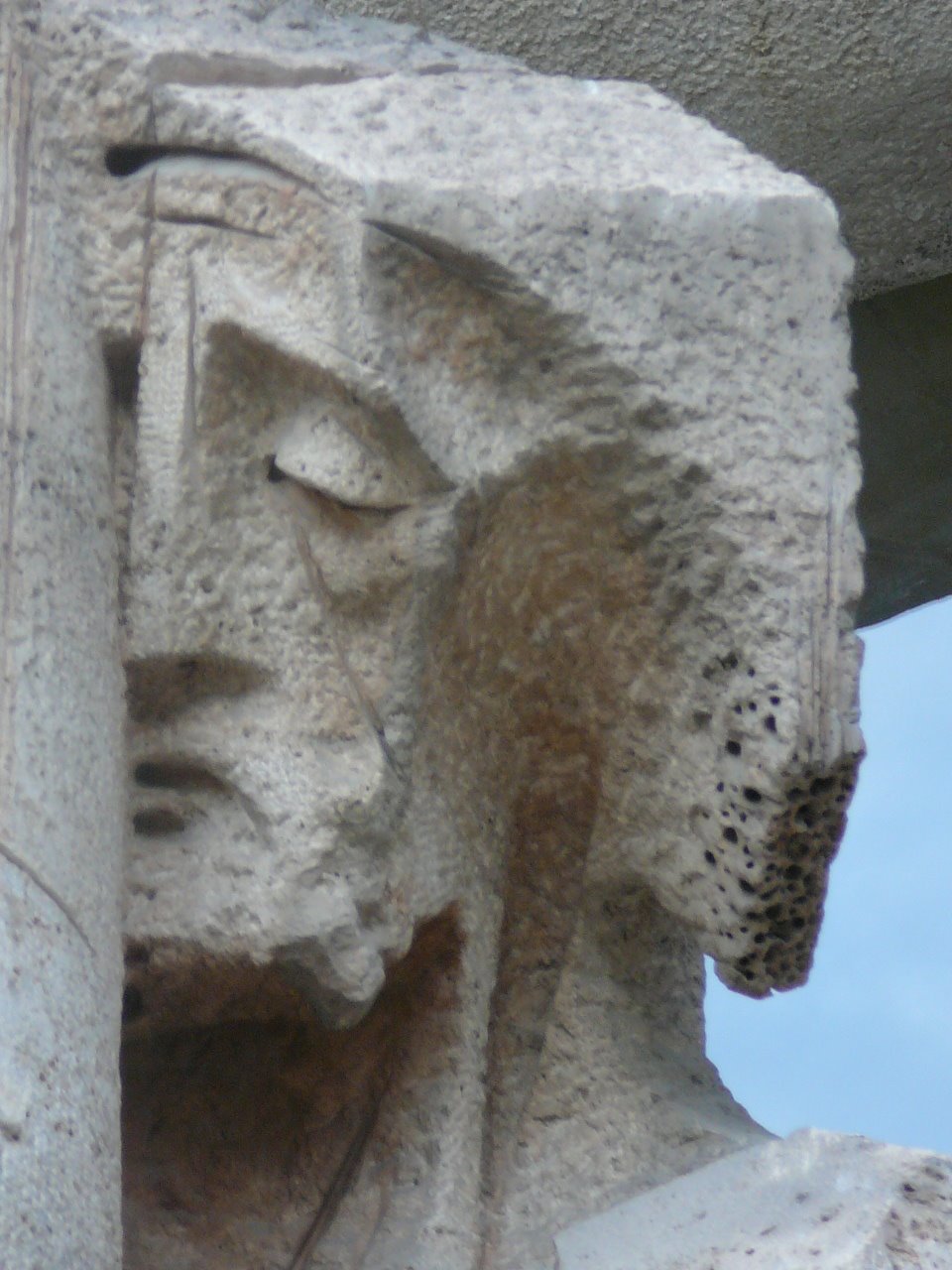 Subirachs was asked to craft the doors for Sagrada Familia. He chose to make them entirely from brass. Some pretty heavy doors:
Subirachs was asked to craft the doors for Sagrada Familia. He chose to make them entirely from brass. Some pretty heavy doors:
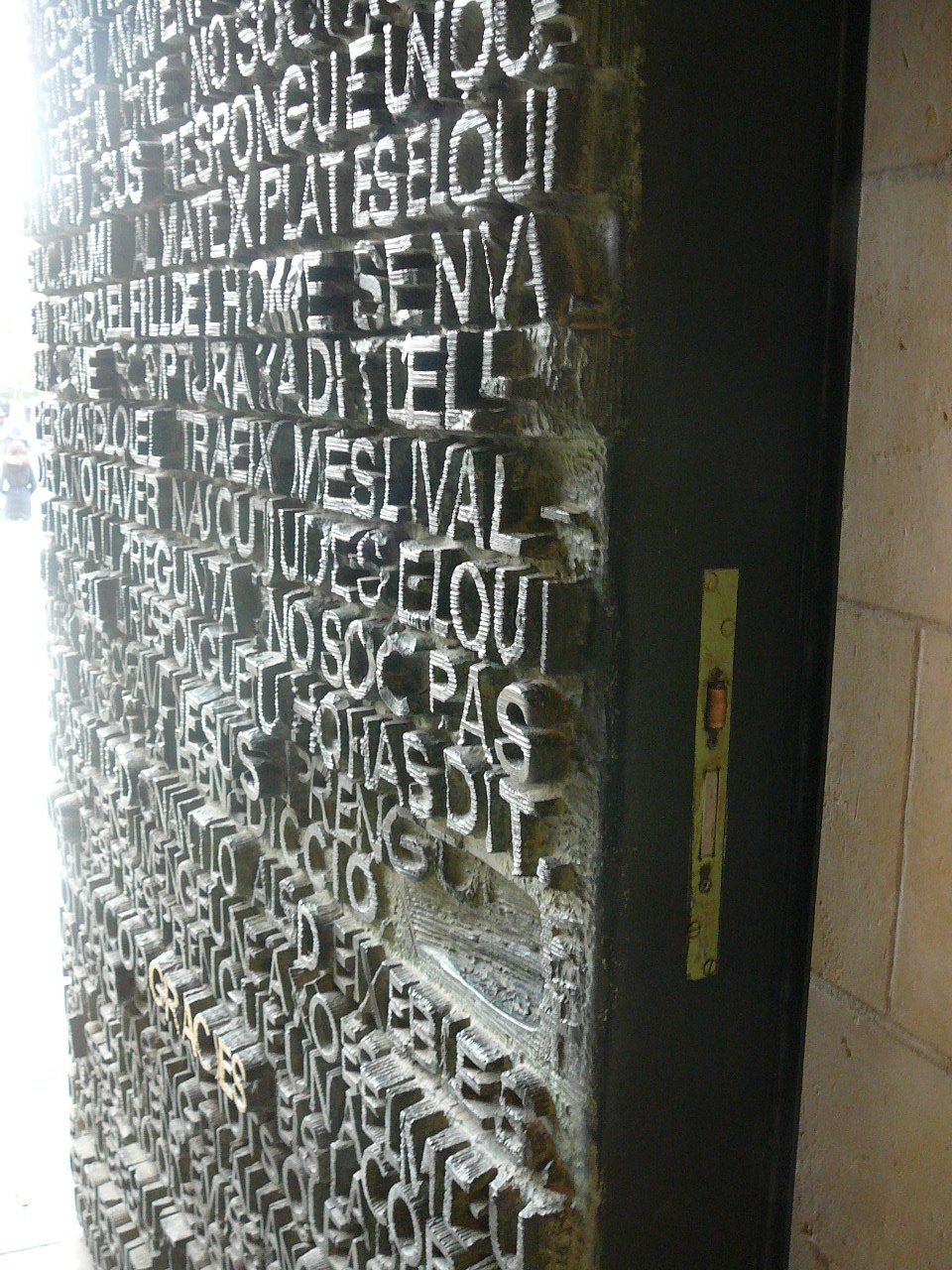 Inside the main apse, the entire ceiling isn’t even completed yet, but this gives you some idea of the size:
Inside the main apse, the entire ceiling isn’t even completed yet, but this gives you some idea of the size:
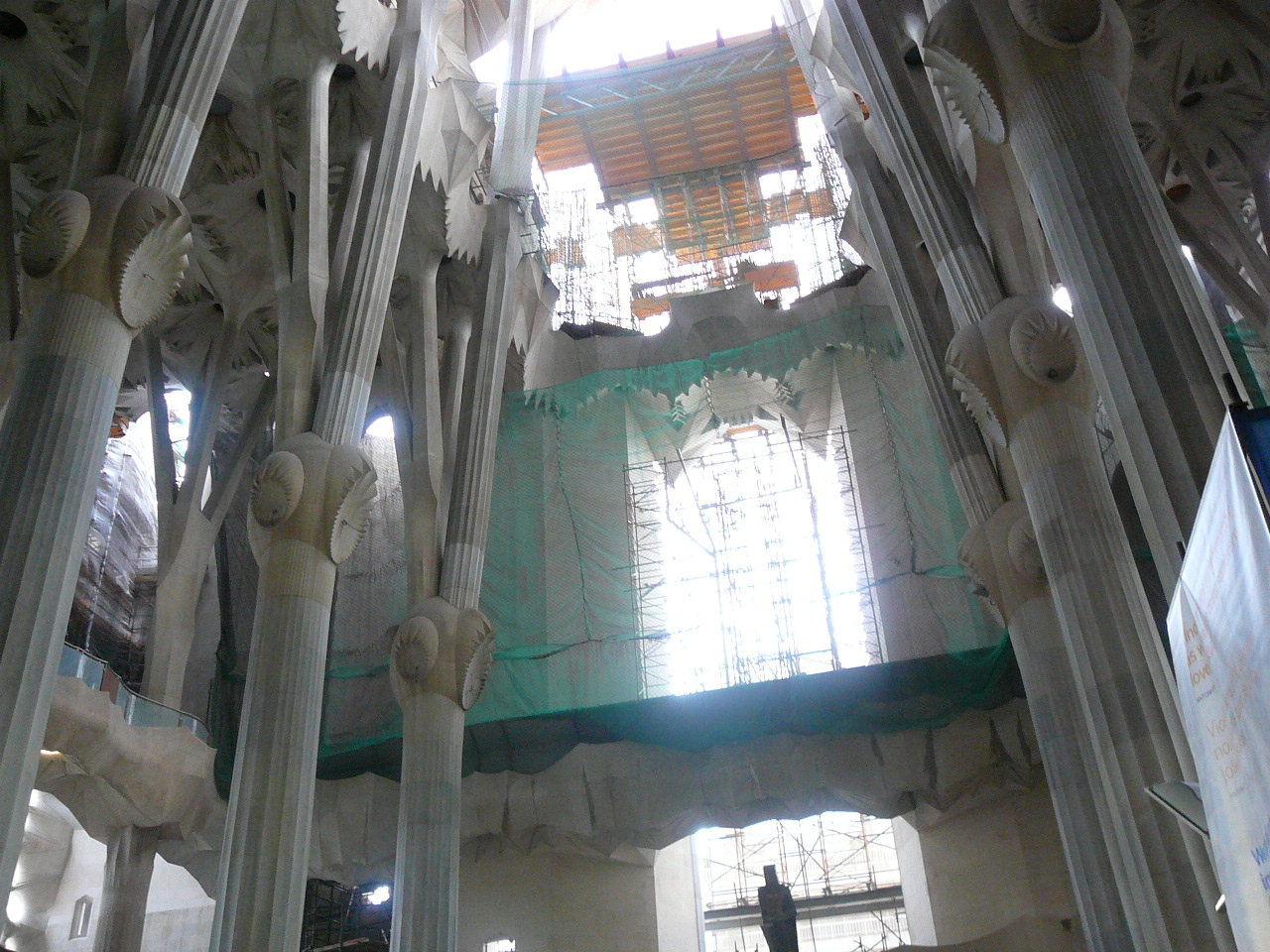
The ceiling has incredible detail, symbolizing a forest full of trees, with light filtering in between them:

Closing this post, here’s a picture of our main hangout in Barcelona. This is Cafe Zurich, located at the top of La Rambla, at the Southeast corner of Placa Catalunya. I hate coffee, but their Cafe con Leche and Canya (pastry, like a bear claw, covered with powdered sugar and filled with fresh pastry cream) are awesome. Place is always packed:

